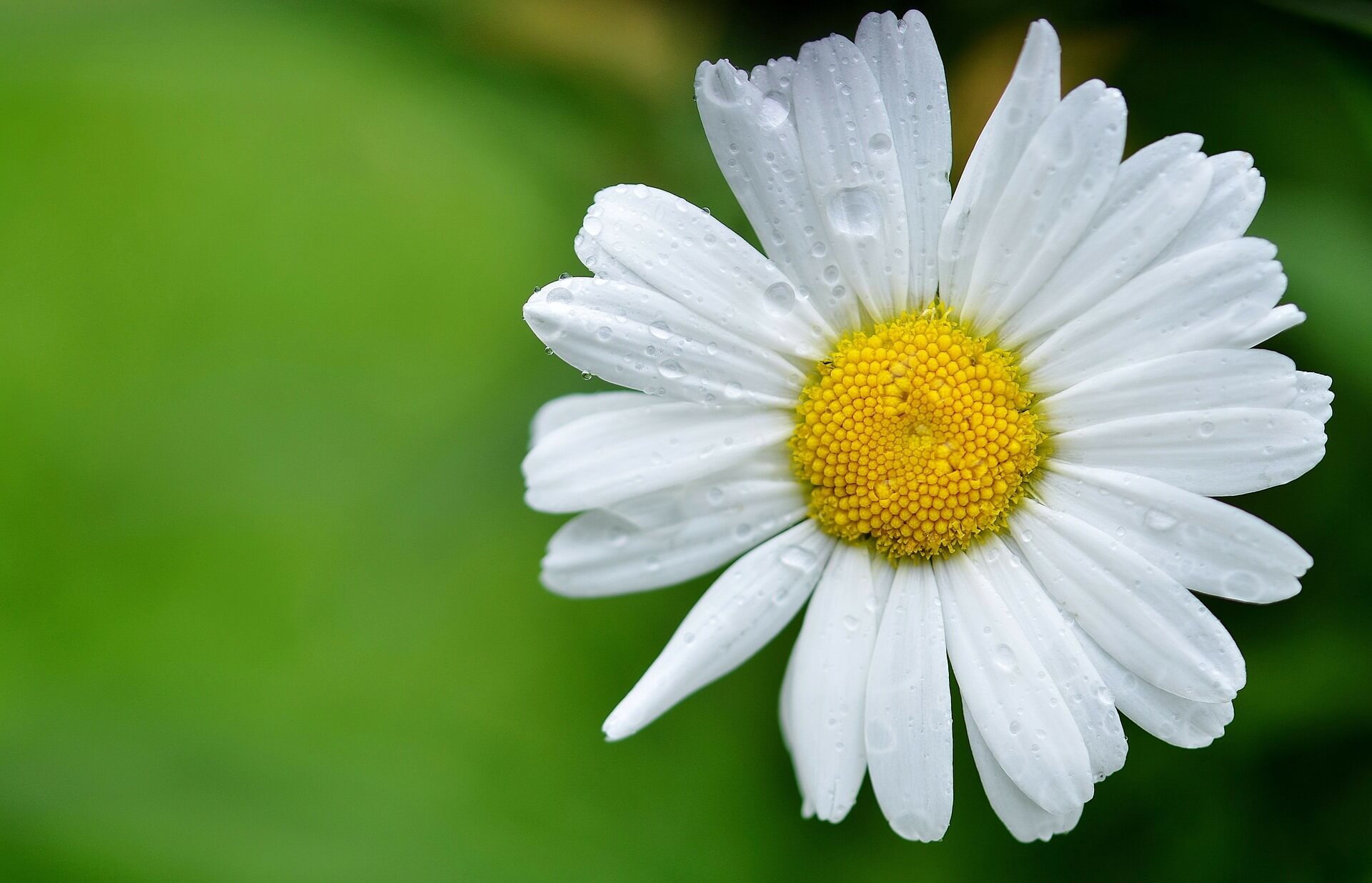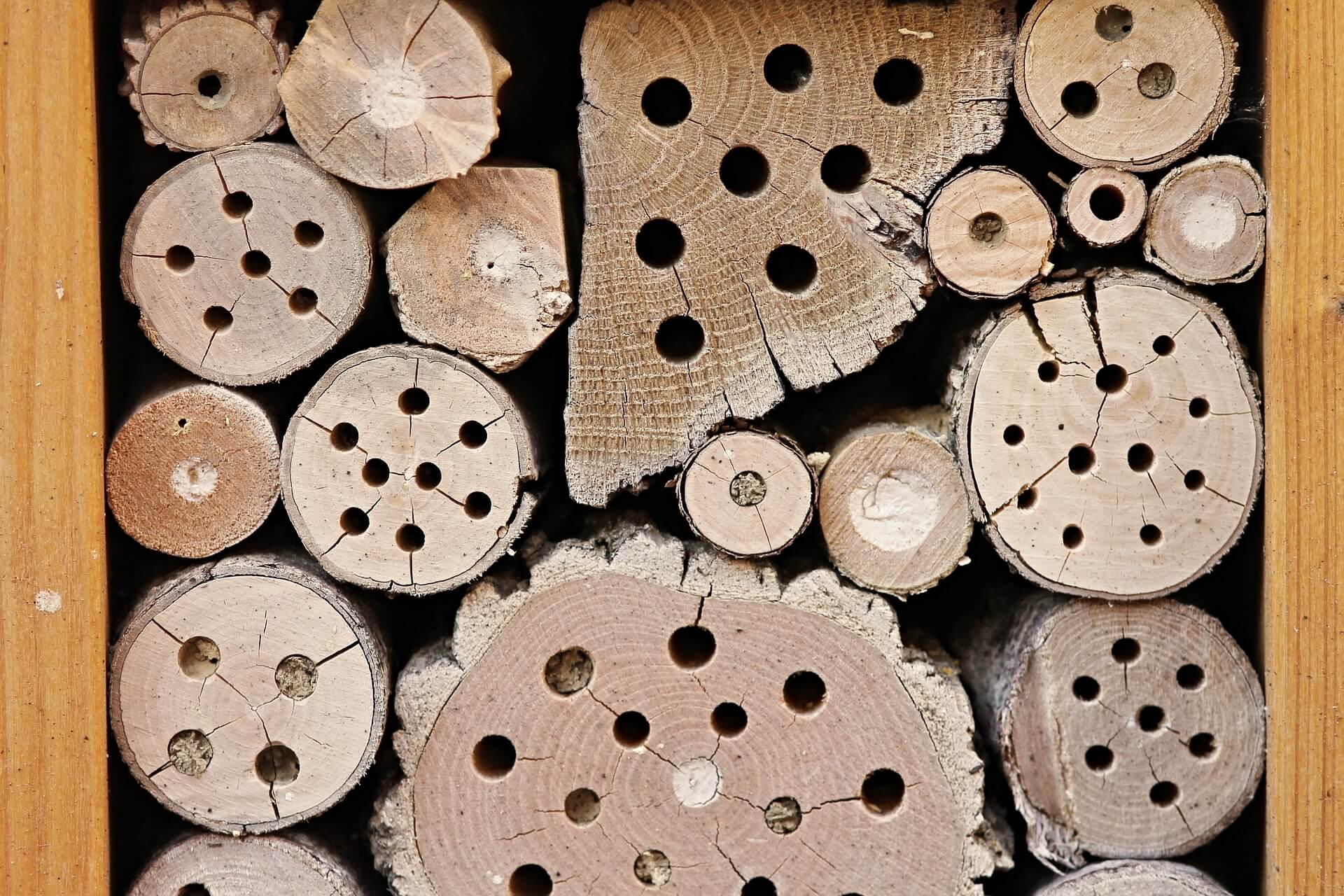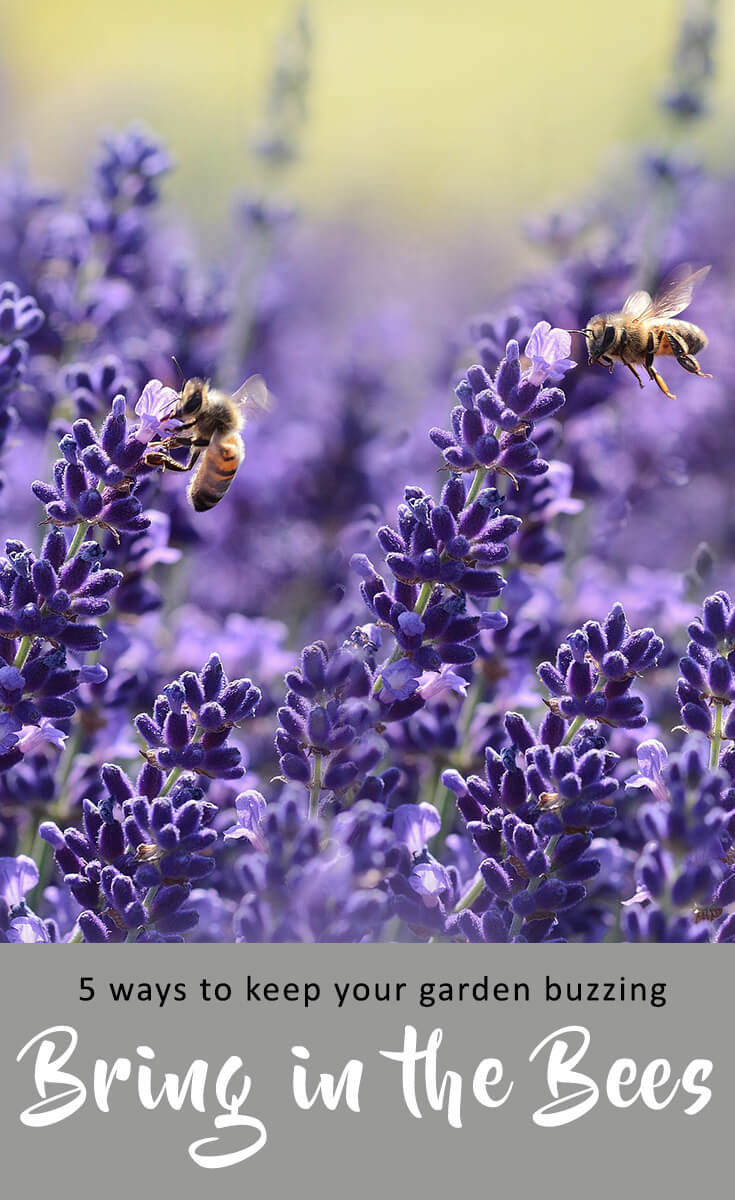Most people know that bees are vital to the worldwide ecosystem. But did you know that there are about 4,000 species of bee in the US alone? They pollinate hundreds of thousands of plant species, bringing biodiversity to the world and to our grocery stores.
But the use of pesticides and diminishing green space are a threat. 1 in 4 wild bee species in the US is under threat of extinction.
Fortunately, you can help them to thrive! Making your backyard a safe and abundant haven for bees can boost local populations. And it will be good for your garden, too!
1. Flowers that attract bees
You know that bees like flowers, but not just any flower will do! They’re attracted to bright yellow, blue, and purple flowers. So look for these colors when making your choices.
Also, bees don’t like to work too hard. So pick flower species with fewer petals for easy access to pollen.

This chrysanthemum has tightly closed petals — too hard for bees to reach the pollen.

This daisy’s center is nice and open. Easy for the bees to reach the good stuff.
Popular flowers with bees include:
- Goldenrod
- Purple coneflower
- Sunflowers
- Daisies
- Bee Balm
- Pansies
- Phlox
Also consider flowering vegetables and herbs for your garden. Bees love the flowers that come with tomatoes and zucchini. And herbs like coriander, rosemary, thyme, mint, and sage are also big bee-bringers. As a bonus, you’ll have fresh herbs and veggies for your kitchen.
One last note — try to stick to native plant species. The bees in your area will know and like them better than some wild exotic flowers.
2. When to plant and how
There’s a little more to attracting bees than just planting the right flowers. You also have to consider when they bloom. You want to provide a tasty food source for your little buddies all summer long. So choose some flowers that bloom in early spring, some in mid-summer, and some in early fall.
If you find that your flowers have all come and gone, add some annuals later in the summer to supplement.
Also, consider where your flowers get planted. Bees are more attracted to wide swaths of easily visible flowers. So rather than splitting up all your daisies into small patches scattered across the yard, plant them all together in a single large bed. Aim for a bed 3’ x 3’ or larger to attract bees’ attention.
3. Give them something to drink
It’s hot out there, and bees get thirsty! Slow, sluggish bees may just be dehydrated.
They can’t land in deep water, so provide some shallow dishes for them to drink from. Toss a few pebbles in the dish for a landing zone. Bees need to stand on dry ground and sip water from over the edge.
A shallow trickling fountain is also a good ides. Again, make sure there are pebbles in the running water to give the bees somewhere to stand. The running water will prevent mosquitos from laying their eggs in your fountain.
4. Use natural pest control
Pesticides don’t discriminate. You may only want to control the aphids, but that insect killer will take out the bees, too.
Certain herbs can act as a natural pest deterrent. Thyme, rosemary, and lavender all repel certain pests, but bees love them! Plant them in patches around the garden for a natural repellant.
Some pests will still penetrate your herbaceous perimeter. Vinegar and Epsom salts mixed with water can be sprayed directly on the irksome little bugs. Castile soap can be used the same way.
Finally, a few drops of strong-scented essential oils, like eucalyptus, orange, and peppermint, can also repel insects. Sprinkle the oils at the base of plants with a bug problem to make them migrate elsewhere.
5. Provide a bee shelter
Give your bee friends a home! Buy (or make) a bee box.
A beehive supports massive honeybee colonies. But a bee box is for the almost 95% of bee species out there who are solitary. These fuzzy loners like a compact space where they can burrow in and lay an egg.
Bee boxes are a box that’s open on one side, full of small hollow tubes or openings for the bees to enter for shelter.

Some bees prefer to dig tunnels in the bare earth for a nest. Leave a few garden beds un-mulched so the female bees can dig their way in and make a little burrow for their young.
If we lose the bees, we lose a lot of the world’s biodiversity and the array of different foods that we enjoy. Help them to thrive with some thoughtful plant choices and gentle pest abatement. They’ll be grateful, your garden will prosper, and the fruits and veggies we love will stay abundant!


